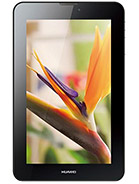 Today we’ll be taking a look at a pretty interesting tablet I’ve managed to find, the Huawei MediaPad 7 ( the Vogue edition, as the name would tell you ). I chose to talk to you about the Huawei MediaPad 7 Vogue model of this tablet for a simple reason: it’s got the strongest hardware of the group. If you’d like to know more about the others, I’ll sum it up for you in a few words.
Today we’ll be taking a look at a pretty interesting tablet I’ve managed to find, the Huawei MediaPad 7 ( the Vogue edition, as the name would tell you ). I chose to talk to you about the Huawei MediaPad 7 Vogue model of this tablet for a simple reason: it’s got the strongest hardware of the group. If you’d like to know more about the others, I’ll sum it up for you in a few words.
There are 3 versions to this tablet: this one, the Vogue, a slightly weaker and cheaper one, the Youth, and the weakest and cheapest of the three, the Lite. Now I’m not trying to be mean when I say that it is “weak”, I just mean that their hardware isn’t up to par with this one. The Huawei MediaPad 7 Vogue has the strongest hardware, a new UI and will over-all offer you the best performance. In all other fields, they are more or less the same.
Price-wise, these tablets can set you back anywhere between 200 to up to 500 dollars. Of course, the price can loosen a bit depending on where you get it from and what deals apply at the time ( usually there are LOADS of offers on the market in the colder season, also the random sales that occur may lower its price by quite a bit ).
SUMMARY
So we’ve already established that THIS is the version you may benefit from the most. It’s time to establish another important detail about this particular version of tablet: it has full support for GSM voice communication, SMS and MMS. That means that it can probably be acquired from certain service providers. Depending on the case, the price may lower according to the contract you choose for it, which brings us to one of the more important questions discussed in this paragraph: “Is the tablet worth it?”. Provided you get a good deal on it and don’t have to pay close to 500 dollars, I’d say it’s worth it. Some may ask “Is the tablet any good?”. Well, considering it has some decent hardware in it, a good OS, a bunch of nice features AND full GSM support, I’d say it’s more than good enough. Don’t take me wrong, it has its fair share of flaws, but those flaws are somewhat tiny when you think of the price-range in which this tablet is situated ( it’s not like you’re paying 700+ dollars for it, in which case you’d have some really high expectations and low tolerance for flaws ).
GENERAL
As I’ve said a few times already, with full GSM support, it’s to be expected that this tablet can use all standard GSM networks. Fortunately, that expectation is fulfilled as this tablet CAN use all standard forms of 2G and 3G networks. The type of SIM card usable by the Huawei MediaPad 7 is of a Mini-SIM format. This tab is available for purchase as it was annunced in June 2013 and released shortly after in July.
BODY
As far as size goes, this tablet is fairly average. It’s just big enough for a 7.0 inch tablet and not much space is wasted with things like wide edges or something like that. As you can probably tell from that minuscule photo of the device, it’s pretty much a regular tablet. The exact specifics of the Huawei MediaPad 7 ( I feel no need to specify which since they are all the same size – when you see me write “Huawei MediaPad 7 Vogue”, that’s when I’m referring t this tablet model SPECIFICALLY ): 193.8 x 121.3 x 9.5 mm ( or 7.63 x 4.78 x 0.37 in ) and it weighs around 335 g ( or 11.82 oz ).
DISPLAY
As far as the display is concerned, the Huawei MediaPad 7 is looking pretty good ( not great, but good nonetheless ). This tablets capacitive screen is of an IPS LCD format with 16 million colors, 7.0 inches in size and fits a resolution of 1024 x 600 pixels. The pixel density of this tablet is approximately 170 pixels per inch ( it could be greater for a screen this size in order to improve the fluidness of things on the screen, but I’d say it’s somewhat acceptable ). I mentioned earlier that the Huawei MediaPad 7 Vogue uses a new UI and that is the Emotion UI 1.5. The Huawei MediaPad 7 Youth had a special kind of Multitouch on it ( the kind that uses 10 fingers ), so I’m not so sure that this applies for this particular tablet as well ( we’ll leave that under a Question Mark just to be on the safe side ).
SOUND
As far as sound is concerned, there’s nothing interesting to say. Everything regarding the audio of this device is pretty stock, lacking any and all audio enhancements.
MEMORY
Memory-wise, this tablet’s not the greatest that there is out there. All versions of the Huawei MediaPad 7 have 8 GB of internal storage that can be expanded via the MicroSD card slot, which in itself takes cards of up to 32 GB. Also, all the versions of this tablet have 1 GB of RAM. What’s disappointing here to see is that, in this day and age in which almost all devices have 2 GB of RAM or more, the Huawei MediaPad 7 still comes out with a mere 1 GB. It’s not necessarily too few, it’s just that the demands of some of these newer apps are simply too large and will, at times, slow down performance for this tablet if not properly taken care of.
DATA CONNECTION
Having full support for GSM networks, it’s only natural that this tablet and all the other versions of itself has both GPRS and EDGE, both of which have the standard speed ( meaning the highest they could get ). The WLAN is standard to, with a Wi-Fi 802.11 b/g/n with a few non-standard things like being capable of DLNA and Wi-Fi Hotspot. The Bluetooth version on this tablet is v3.0 and it’s equipped with A2DP and EDR on it. The USB port ( which is MicroUSB v2.0 ) has USB Host on it, but it lacks MHL.
CAMERA
The Huawei MediaPad 7, no matter the version, has a pretty unimpressive camera: with a mere 3.15 MP of camera power ( for the main one ) and a VGA as a frontal camera, taking pictures with this tab, especially good and quality pictures, is somewhat out of the question. Sure, it will serve its purpse here and there, but don’t have overly large expectations from it.
BATTERY LIFE
It bothers me that the battery of this device is non-removable. While the battery is a good one, a Li-Po 4100 mAh battery that can ALLEGEDLY sustain the tablet for up to 20 hours of talk-time. What bothers me about non-removable batteries is the fact that tey are non-replaceable in the eventuality of a break-down ( you’re left with the only option of fixing the whole device, or buying a new one ).
HARDWARE
The hardware of the Huawei MediaPad 7 Vogue is the most supperior of the group of three. This particular device has a Huawei K3V2 chipset with a Quad-Core 1.2 GHz processor, where as, if I’m not mistaken, the Youth version has a Dual-Core 1.6 GHz processor and the Lite version a Dual-Core 1.2 GHz processor.
SOFTWARE
As far as software is concerned, almost all versions of the Huawei MediaPad 7 have the same operating system, with minor alterations here and there. To be precise, I’m talking about Android OS v4.1 Jelly Bean.
FEATURES
The Huawei MediaPad 7 doesn’t have all THAT many features, but they are sufficient in number. For instance, it only has two sensors on it: Accelerometer and Proximity. The messaging on this device can be done via: SMS ( with Threaded View ), MMS, E-Mail, Push Mail and IM. The device also has a browser that uses HTML5, but it has no support for Radio. It does, however, have support for Java via MIDP emulation. The GPS of this device also uses A-GPS supprt. This tablet is available in two colors: Black and White ( both of which look awesome ).
Here’s a brief list of what this tablet can do:
- SNS integration
- MP3/WAV/WMA/eAAC+ player
- MP4/WMV/H.263/H.264 player
- Organizer
- Document viewer
- Photo viewer/editor
- Voice memo
- Predictive text input
This concludes our tiny review of the Huawei MediaPad 7 Vogue. Please feel free to give a try to either THIS tablet, or any of its counterparts, although my personal preference would be this one. Hope I helped in offering you at least a tiny bit of information about the device.

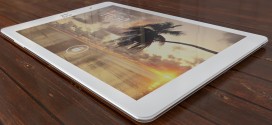
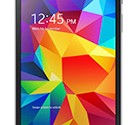
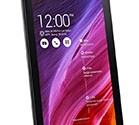
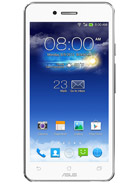
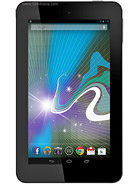
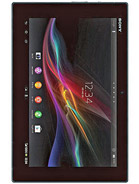
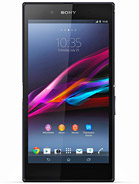
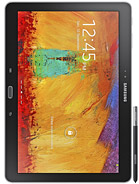
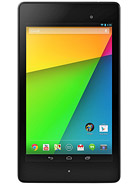
I recently was renaming some audio(Music) when my Audio and Video drivers stopped playing and became mute. however the speakers work perfectly only on when playing the ringtones.
please help…..